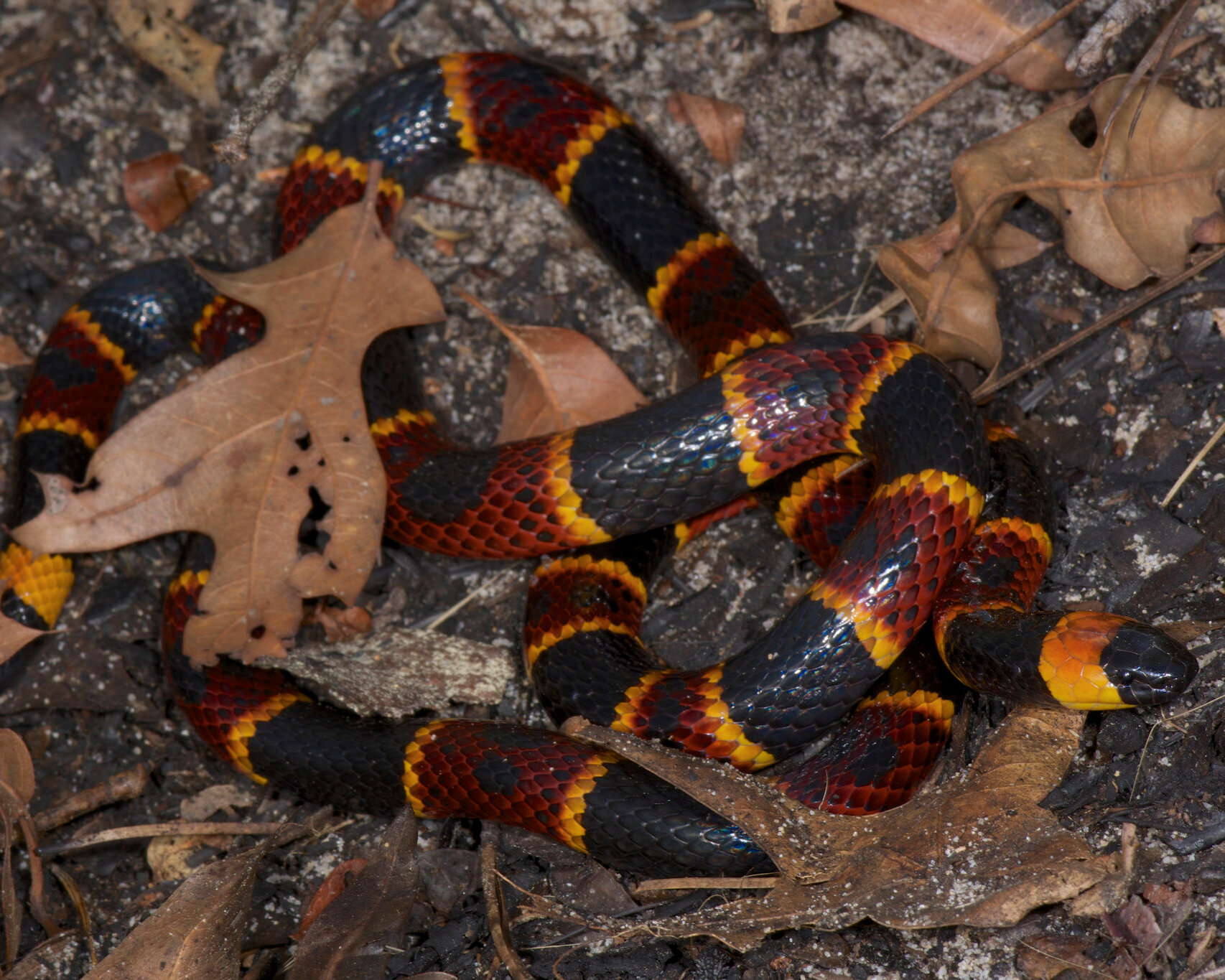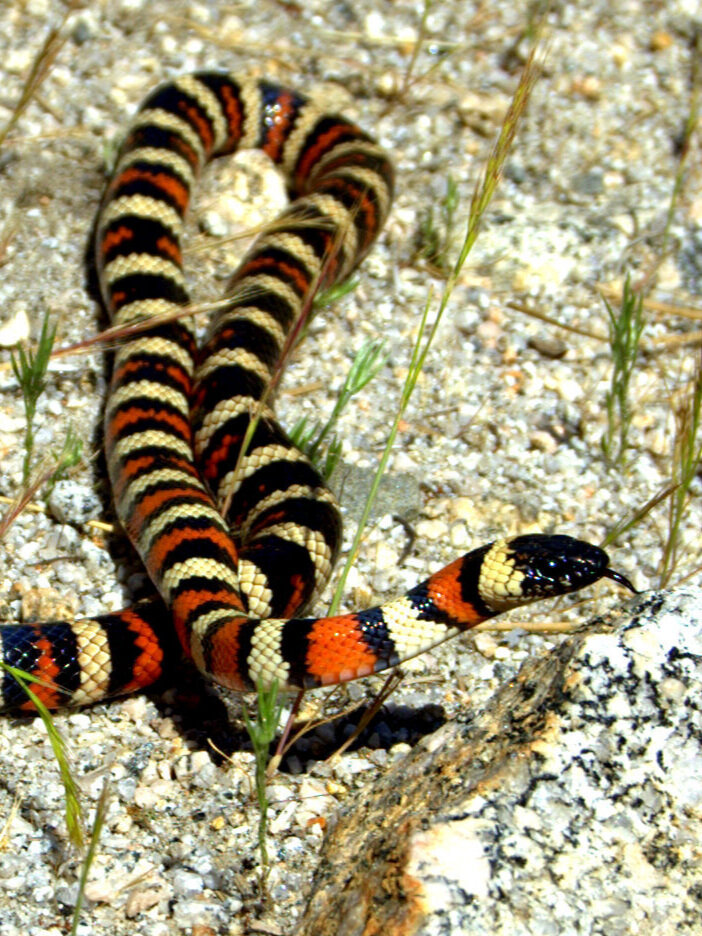If you grew up in the south, the range of the eastern coral snake, at some point you heard the thankfully easy to remember rhyme:
Red touch yellow
Kill a fellow
Red touch black
Friend of Jack
The poem refers to the color of two very similar looking but oh so different snakes. The eastern coral snake has bands of red, yellow, and black but the red bands are always next to the yellow. The kingsnake has the same color bands but red bands always touch black. Good to remember because the coral snake has the most potent venom of any American snake while the kingsnake is harmless (except to other snakes).
Eastern coral snake, photo by FWC Fish and Wildlife Research Institute
Kingsnake, photo by Dawn Ellner FCC
Besides having the typical Southerner's fascination with snakes, I was thinking of this rhyme the other day for two reasons. One is that yellow seems to be the color of the late spring and early summer and also the color for the season of COVID-19. After all, it is the color of caution, the attitude we've all had to adopt lately.
But perhaps its other associations give us reason to hope. Late spring and early summer are the seasons of growth and pave the way for the mature beauty and harvests of late summer and fall. They are the days of hope.
Marsh marigold near a stream, photo by Peter Gorman
Golden Alexander, photo by Joshua Mayer
Marsh marigolds are among the first of the wetland flowers to bloom and golden Alexanders are among the first on the prairie. In neighborhood gardens, the traditional yellow daffodil is among the earliest bloomer and will brighten any spring day. Sally and I delight in the yellow wood poppies and bellworts in the yard and I even enjoy the dandelions. Finally, one of my favorite stretches of my favorite stream has the perfect accompanying wild flowers, trout lilies.
Yellow warbler, photo by Mick Thompson
Let's not forget the birds. I love the yellow warbler because it's the one I see the most and can actually identify. Plenty of other warblers have slashes of yellow. Some of our earlier butterflies are yellow, most notably the Eastern tiger swallowtail.
Back to the streams, folks like me are now hoping for Wisconsin's trifecta of yellow mayflies. The sulphurs (I'm using the traditional angler's names) are small and prolific. They sometimes hatch and fly in great numbers. The ones that survive trout fly beautifully and return to the water to lay eggs in dense clouds. The light cahill is a large and stately mayfly that breaks the hearts of trout anglers. You see two or three come off the water in the afternoon and think oh boy the hatch and the trout frenzy are about to begin. But those are the only ones to appear so you're left admiring the mayfly. Right about now, though, trout, birds, bats, and anglers are hoping to encounter the Hex during the late evening. Hexagenia limbata (it attests to the insect's status that its common name refers to its scientific name) is North America's largest mayfly. Bright yellow and bigger than many butterflies you cannot miss seeing it even though it hatches out late at night. Even on a medium-sized trout stream it can hatch by the thousands. Every trout in the stream, all nearby bats, and any bird that can maneuver at night are on the alert. A large Hex hatch is one of Wisconsin's greatest wildlife events. The most reliable sites for such hatches nearby are the great trout streams of central Wisconsin in Waupaca, Waushara, and Marquette Counties (the Mecan River is a great stream with lots of public access).
Timber rattler at a safe distance. Photo by Patrick Hasburgh
The second reason I was thinking of the old rhyme: I recently met a cousin of the coral snake, who also inspires caution: the timber rattlesnake. Pat, my friend and fishing partner, heard the warning rattle. We both then had the honor of seeing this great creature slowly move away and swim across the creek. As we re-constructed what had happened, we realized that the snake had warned Pat when he was ... oh come on, you can guess these days ... yep, 6 feet away. Thanks goodness, this snake practices social distancing. Based on what I later saw driving through a small town and watching some activities near two bars, I was safer around the snake.
The advocacy message from the coral snake and the timber rattler is let's stay cautious and practice social distancing. And our warblers, flowers, and mayflies remind us that better days are ahead.
Written by Topf Wells, Madison Audubon board member and advocacy committee chair









